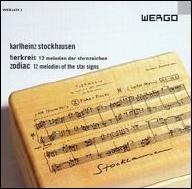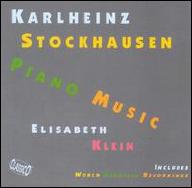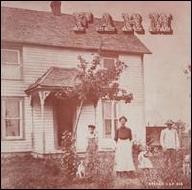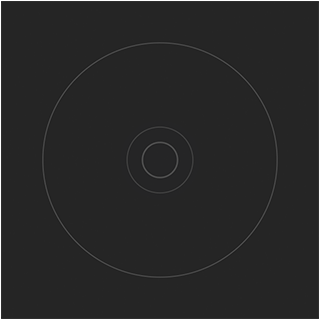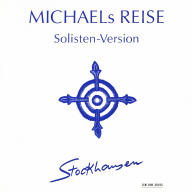Born outside the city of Köln (aka Cologne) on August 22, 1928, Stockhausen studied at the Cologne Musikhochschule from 1947 to 1951. Influenced by Olivier Messiaen's Mode de Valeurs, he began exploring long-range serial composition, a process he first tackled in 1951's Kreuzspiel and the following year's KontraPunkte, both written for piano-based ensemble. While working on the latter, he traveled to Paris to study under Messiaen himself, and it was there that he first delved into electronic music.
Upon returning to Cologne, Stockhausen continued his pursuits, achieving his first significant breakthrough with 1956's Gesang der Jünglinge -- composed for vocal and synthesized sounds, it was among the first tape-loop pieces ever assembled. Concurrently, he continued his work with serial instrumental music, completing a cycle of 11 piano pieces in 1956; a year later Stockhausen composed Gruppen, a work for three orchestras. Both were notable for featuring large groups of notes, a significant shift away from the isolated points that typified the music of avant-gardists like Messiaen and Anton Webern. His fascination with the abstract further extended into a series of essays as well as his lectures at Darmstadt, which profoundly influenced contemporaries including Luciano Berio and Pierre Boulez. (Also attending: Holger Czukay, later a co-founder of the pioneering Krautrock group Can.)
Stockhausen made his first trip to the U.S. in 1958, a journey that triggered a new relaxation in his music attributed largely to the influence of John Cage. The leisurely pace of 1959's Carré, a composition for four choral-orchestral groups, reflected the change. Another key work completed as the decade drew to its close was Zyklus, conceived as a physical and musical circle with the soloist surrounded by a large array of instruments on all sides, complete with a score printed on a number of spiral-bound pages (any of which might begin the piece, with the rest following in cyclical sequence). More esoteric still was Refrain for Three Players, notable for a movable strip of clear plastic containing the recurrent features of said refrain, with the position of the strip in relation to the score varying with each new performance.
In 1960, Stockhausen premiered the landmark Kontakte, heralded as a watershed in the evolution of modern experimental music. Composed for electronic tape, either alone or in tandem with live piano and percussion, it was among the first pieces of its kind to fuse prerecorded material with live instrumentation, with the stated goal of expressing the continuous spectrum of sound separating noise and tone. At the same time, it expressed a "moment" form of composition, without any emphasis on progression. Kontakte resurfaced a year later as part of Originale, a new work in the realm of musical theater in which the actions of participants were coordinated according to the rigors of the score. Stockhausen's major open form work, Momente, began taking shape in 1961 as well.
By the mid-'60s, Stockhausen's immersion in electronics was almost total, and in late 1964 he assembled a touring ensemble to premiere his latest composition, Mikrophonie I, a work inspired by his recent discovery of the limitless variety of sounds to be gotten from any instrument in conjunction with microphones and electrical filters. Mixtur was a live work for orchestra, sine wave generators, and ring modulators, with the latter resurfacing again in 1965 in Mikrophonie II, also scored for chorus and Hammond organ. While in Japan, he also created a pair of major tape works, the 1966 sound mosaic Telemusik and its 1967 companion piece, Hymnen, constructed from recordings assembled from across the globe, including a variety of national anthems.
Stockhausen's next period found him less in the role of creator than "process planner" -- 1967's Prozession consisted of no new material, instead requiring its players to perform interpretations of his earlier works, while Ensemble called upon a dozen of his Darmstadt students to each write a part for one instrument and tape or short-wave receiver. Similarly, 1968's Kurzwellen was little more than a series of procedural instructions for its performers to imitate sounds they heard on short-wave radio broadcasts. With the following Stimmung, Stockhausen's aim of universalization took a different tactic, with its performers pitching their voices to a series of natural harmonics; these works, in addition to 1968's Aus den Sieben Tagen, served to gradually eliminate the concept of notation, with the ultimate goal of truly intuitive musical creation.
With 1970's Mantra, Stockhausen returned to more conventional compositional techniques, resulting in a fully notated piece for piano and electronics built around transformations of its melodic theme. His major works in the years that followed -- 1971's Trans, 1974's Inori, and 1977's Sirius among them -- were similarly thematic, albeit more dramatic than his earlier material. Beginning in 1980, all of Stockhausen's energies were focused on Licht, a seven-part work including individual performances for each night of the week. Remaining active as the century drew to its end, he was celebrated as a trailblazing force behind the rise of contemporary electronic music. On December 5, 2007, Stockhausen died of heart failure at the age of 79 at his home in Kürten, Germany, and while still primarily a cult figure, his place in 20th century musical history was nevertheless assured. ~ Jason Ankeny, Rovi



